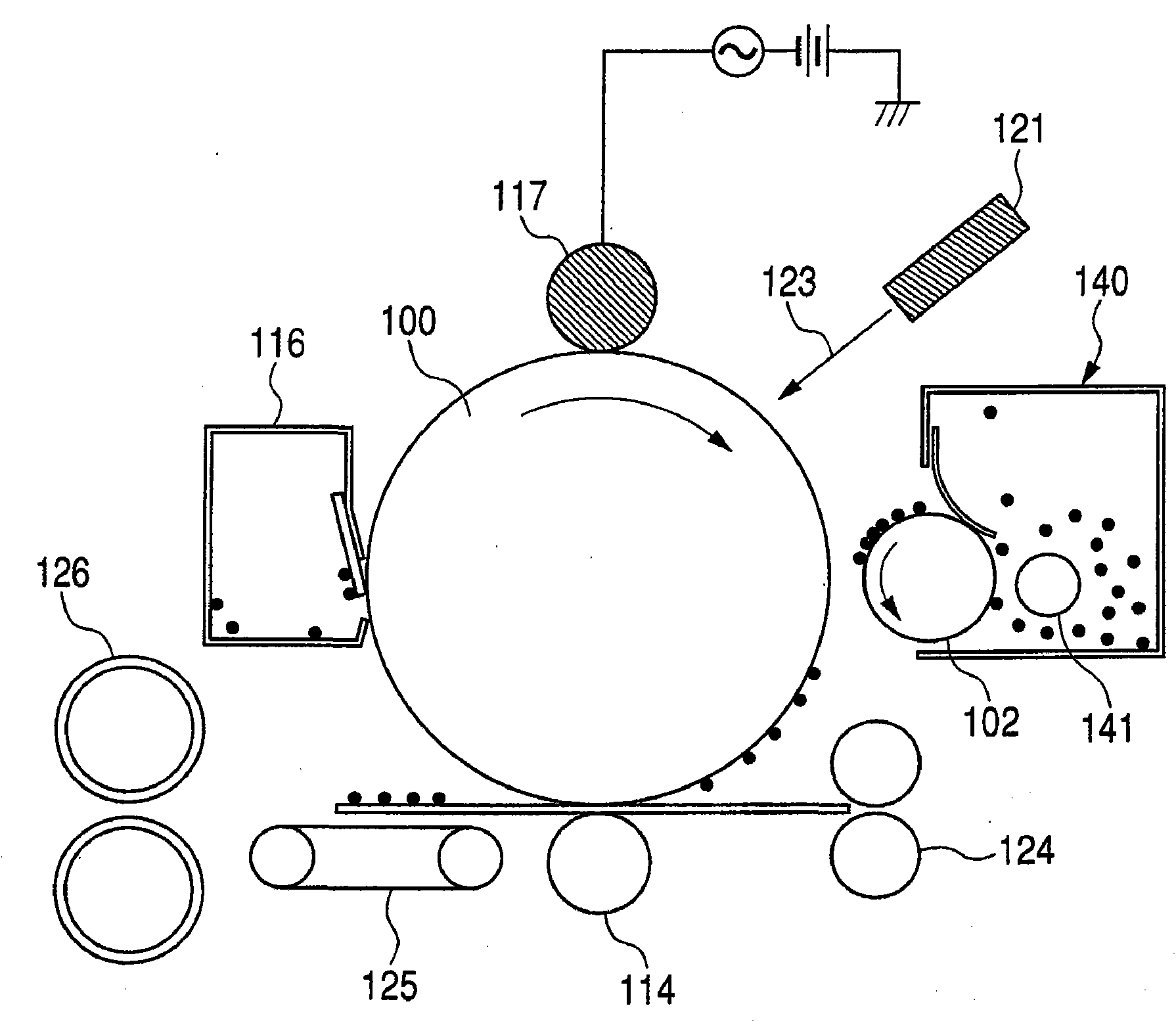Magnetic toner
A toner and magnetic technology, applied in the field of toner, can solve the problems of fixing member contamination, low fixing performance of toner, and formation of line images too thick, and achieve stable image density, excellent low-temperature fixing performance, and suppressed image The effect of defects
- Summary
- Abstract
- Description
- Claims
- Application Information
AI Technical Summary
Problems solved by technology
Method used
Image
Examples
Embodiment 1
[0242] Using Magnetic Toner 1, the following evaluations were performed. The evaluation results are shown in Table 9.
[0243] As an image forming apparatus, an LBP3000 (14 sheets / minute; manufactured by CANON INC.) modified to have a process rate of 240 mm / second was used. In a high-temperature and high-humidity environment (32.5° C. / 80% RH), a horizontal line image having a printing percentage of 3% was reproduced on 2,000 sheets in a batch mode to conduct a running test. Letter paper (75g / m2) purchased from Xerox Corporation 2 ) is used as a recording medium.
[0244] image density
[0245] After the image was reproduced on 2,000 sheets, a solid image was formed, and the density of the solid image was measured using a Macbeth densitometer (manufactured by Gretag Macbeth Ag).
[0246] A: More than 1.40.
[0247] B: 1.35 or more and less than 1.40.
[0248] C: 1.30 or more and less than 1.35.
[0249] D: Less than 1.30.
[0250] point reproducibility
[0251] After r...
Embodiment 2-9 and comparative example 2-9
[0275] Magnetic Toner 2-9 and Comparative Magnetic Toner 2-9 were similarly evaluated in the same manner as in Example 1. The results are shown in Table 9.
[0276] Table 6
[0277]
[0278] Treatment agent 1: n-C 4 h 9 Si(OCH 3 ) 3
[0279] Treatment agent 2: n-C 6 h 13 Si(OCH 3 ) 3
[0280] Treatment agent 3: n-C 8 h 17 Si(OC 2 h 5 ) 3
[0281] Treatment agent 4: n-C 10 h 21 Si(OCH 3 ) 3
[0282] Table 7
[0283]
Toner No.
magnetic material
input speed
C / E
preprocessing
crushing step
Magnetic Iron Oxide
production method
Magnetic Toner 1
5.3×10 -4
yes
Magnetic Iron Oxide 1
Magnetic Toner 2
5.3×10 -4
yes
Magnetic Iron Oxide 2
Magnetic Toner 3
2.7×10 -3
yes
Magnetic Iron Oxide 3
Magnetic Toner 4
1.6×10 -3
yes
Magnetic Iro...
PUM
| Property | Measurement | Unit |
|---|---|---|
| particle size | aaaaa | aaaaa |
| particle size | aaaaa | aaaaa |
| specific surface area | aaaaa | aaaaa |
Abstract
Description
Claims
Application Information
 Login to View More
Login to View More - R&D
- Intellectual Property
- Life Sciences
- Materials
- Tech Scout
- Unparalleled Data Quality
- Higher Quality Content
- 60% Fewer Hallucinations
Browse by: Latest US Patents, China's latest patents, Technical Efficacy Thesaurus, Application Domain, Technology Topic, Popular Technical Reports.
© 2025 PatSnap. All rights reserved.Legal|Privacy policy|Modern Slavery Act Transparency Statement|Sitemap|About US| Contact US: help@patsnap.com



